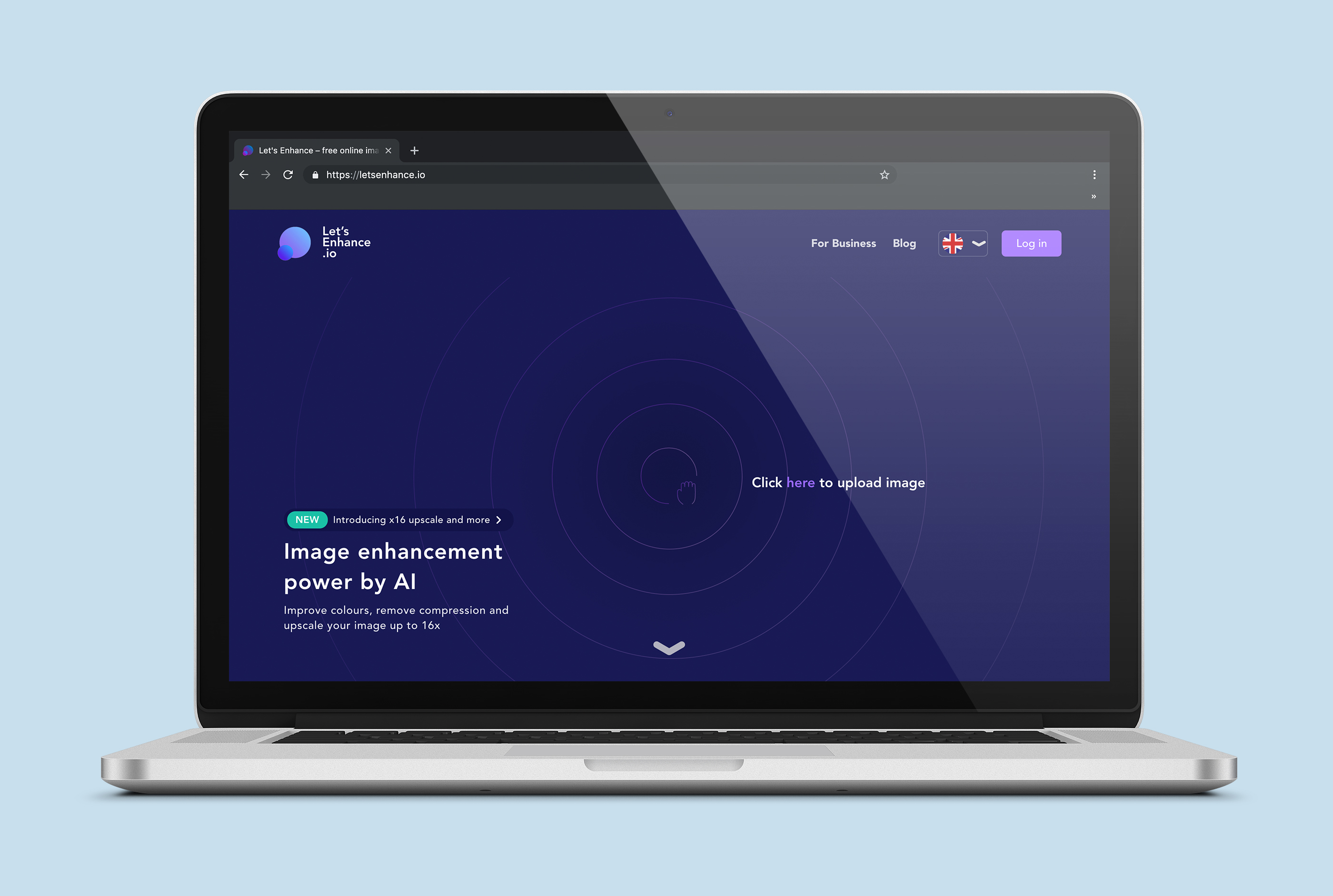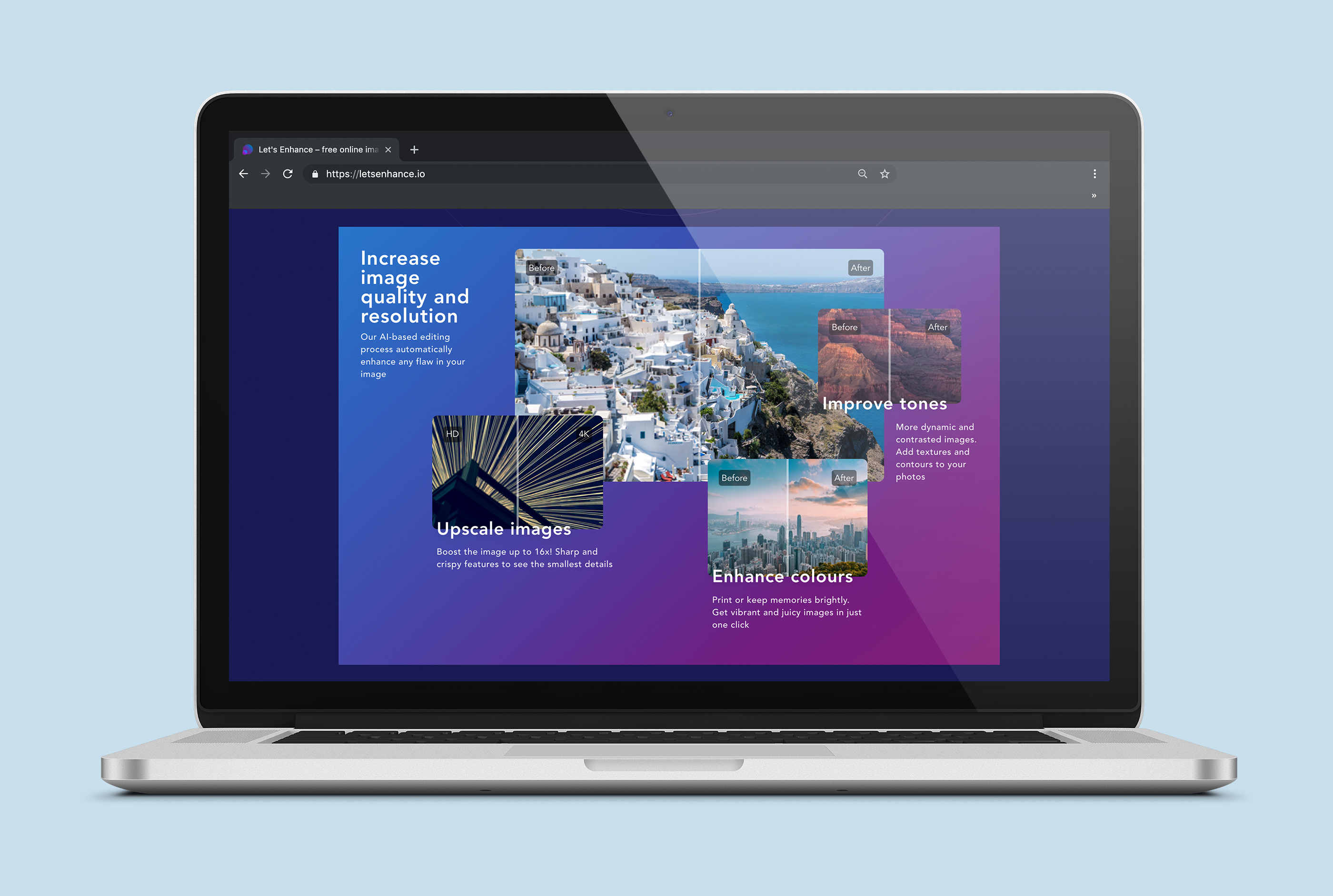Let's Enhance is a brilliant website which enables you to increase your images quality, size and resolution. Ever felt frustrated by the quality of an image you've taken or been given to use in a project? Here is a great solution.
To work it's magic the site uses Ai- based editing, which is pretty cool and having tested it we know for sure that it produces some impressive results! Want to learn more?
We recently interviewed Ross Nazarenko from the company to ask all about how it got started, which creative professionals it will benefit and their plans moving forward!
Let's Enhance have provided us with a link so you can get 35% off all packages on their site! It can be found towards the bottom of this blog post.
Interview
Q. First off could you tell us a little about who founded Lets Enhance and why the company was started in general?
A. Lets Enhance was founded by two people, Sofiia Shvets and Vladyslav Pranskevichus. Sofiia was previously working at Google with lots of startups and growing companies, Vlad is a data scientist and software engineer with more than 10 years of experience.
The initial idea came up to Vlad when he was helping his friends with an online store. They were selling lots of products and faced the issue of low-quality images got from suppliers. There was no simple solution to deal with such kind of problem and then Vlad was curious to experiment with AI to solve it.
Q. You mention on your site that you built a new technology to add new details and restore features within images. Could you tell us a little more about this?
A. Sure. We are using a new approach to work with images building smart algorithms in the cloud.
They work similarly to designers analysing what is in the image and creating new details based on its context. Think about it as someone who just sees the picture and can understand: “Ok, this is an eye and that’s a cat.” It is why this technology works way more better than any other on the market which just uses default methods of upscaling.
Existing photo editors stretch images to upscale them and blur them to cover up the resulting pixelization. This approach is useless when an image has been compressed and parts of its information are missing.
We built a completely new technology. It adds new details and restores features of an image by reconstructing it from scratch.
Q. You have both a Desktop site and Mobile App how long did these take to develop?
A. Currently, we are building our system in the cloud in the form of a web app which works on all devices and API for businesses. The reason is simple. All the algorithms we are using are quite hard to process and requires lots of power resources. We plan to optimise them and release in the form of an app in the
coming year.
Q. What were your main challenges in this process?
A. Improving the technology is the main challenge for us. I mean, we’re working on networks all the time. Recently we launched x16 upscaling for beta-testers, as well as special networks for real-estate, printing, product, and food photos. It’s all about the question of continuous improvements, making it better, faster, stronger.
"The funny thing, we have printed a photo of our CEO from
Instagram as a wallpaper (3x3 meters) for one conference."
Q. Which creative professionals do you think will benefit most from this service?
Currently, we see from our customers, that most common use-cases are:
- To print anything. All the time people are getting images they want to bring into an offline world from messengers, Instagram and so on. But the quality of these pictures is low. So they can upscale it now, get 300 DPI and print it. The funny thing, we have printed a photo of our CEO from Instagram as a wallpaper (3x3 meters) for one conference. The other thing here is when you want to print a T-shirt and you need to have this specific image in higher resolution.
To use within design work. We all use photo stocks, right. But sometimes we just need even higher resolution.
To use in ecommerce. Another common case here. When you’re selling goods online, customers want to see all the details before buying from you. The default photo you will get from the photographer is around 1500x1500 and it’s impossible to check everything by zooming it 6-8-10 times because of the only one thing you will see is pixels.
To use in a content-marketing. It’s pretty close to the 2nd point. There are a lot of SMM and content markets who are using photos from Google and sometimes it’s hard to find the right size or to find a logo in good quality.
Game designers. Especially those who’re working with existing textures.
Art and cartoon makers. As well as drone and space imaging. We even have a few doctors who’re using it, and historical researches.
Q. We love your logo and wider visual identity at what point did you guys start thinking about the visual style of the brand?
A. It came naturally. I mean, we’re always trying to improve our design and to become not only technology but a design driven company. When someone is trying to upscale photo of his or her mom you can’t just popup in their face and say: “Pay us!” or any other crazy stuff. So for us, it’s more about providing value than just getting revenue straight away. It’s why we will never use any type of things which can kill the user experience.
Q. And what do you think is the hardest part of developing a brand for a start-up?
A. It’s about value. It’s about being a value-centric company. It doesn’t matter how much money you put to your brand if the product itself doesn’t give any value at all. And it’s actually the top of reasons why startups are falling. Luck of value. Instead, we’re focusing on how we can solve the problem first, then we test different things, pick up the best one, polish it and make it look better and - here we go - a brand is coming.
Q. What’s the main goal you’d like to achieve in 2019?
A. We have launched our B2B solution which is API based, so I would say for us the main goals for this year is to help even more companies to automate the process of image enhancement, launching new specific filters to all our customers and hire 15 more people to make it possible.
Let's Enhnace could definitely come in handy whilst working on all sorts of creative projects.
It ensures you are working with an excellent quality image which will look great both on and off screen!
After giving it a test ourselves we were excited to feature the site and highly recommend you test it out and keep an eye out for plenty of new features coming soon!
Your first 5 image uploads are totally free then you will need to take out a monthly subscription.
Let's Enhane have provided us with a 35% discount on any of their packages if you use this link which will work one time per user!
Thanks for reading and we hope you enjoy using Let's Enhance!
We would love to hear what you think in the comments below.




